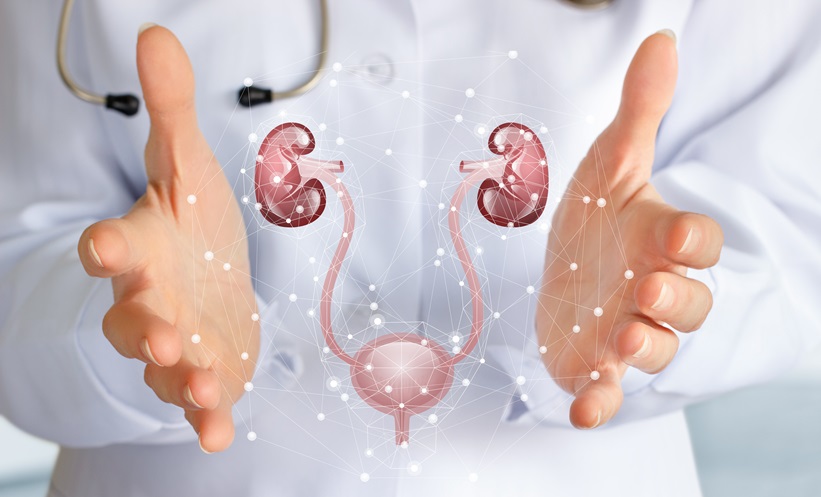CROWDS spilling along canals, the brilliance of centuries of art waiting to be enjoyed at dozens of galleries, and the bright explosion of colour from millions of tulips in bloom. The beautiful city of Amsterdam, the Netherlands, is an absolute delight, and certainly accustomed to hosting visitors with more than 20 million tourists visiting the city of fewer than 1 million every year. But this year, closed borders, cancelled flights, and limited gatherings saw the European Association of Urology (EAU) move their 35th Annual Congress, EAU20, entirely online for the first time.
Undeterred by a new virtual format, more than 13,000 urologists, researchers, and industry specialists joined the congress to share in the latest urology research, hear the insights of experts in the field, and connect with a community sharing a goal of providing better care for every patient. The original congress date, 20th–24th March, was postponed as addressing the initial wave of COVID-19 in Europe took precedence. However, the delay allowed for better preparation of the new digital format, launched 17th–26th July, with the formal congress underway from 17th–19th July, 2020.
Discussing changing to a virtual programme in a press release ahead of the congress, Scientific Congress Office Chair Prof Peter Albers, Düsseldorf, Germany, highlighted the decision to shorten many of the presentations and schedule more time for discussion and question-and-answer sessions: “The virtual meeting should become a very vivid and interesting discussion event.” These planned changes worked brilliantly, as limiting the prerecorded time of any one speaker avoided a didactic, lecture-style event, and instead fuelled a truly collaborative, shared experience for the thousands of attendees.
EAU Secretary General Prof Chris Chapple welcomed congress attendees from his home institution in Sheffield, UK, via video. Lecture presentations by scheduled speakers were prerecorded, enabling the congress to run smoothly. Speakers then hosted live, moderated discussions, debates, and question-and-answer sessions to provide a more engaging, interactive tone for the congress.
Breaking news and hot-topic research shared at EAU20 included oncological insights, such as the results of the largest-ever study by patients revealing the impact of prostate cancer treatment on quality of life, and a Belgian study examining the role of a genetic ‘switch’ in metastasis in high-risk prostate cancer. Beyond oncology, EAU20 shared the findings of a study considering the role of hormone replacement therapy in recurrent urinary tract infections in women, alongside the insights from a 10-year study in Milan, Italy, about the reasons why men attend sexual health clinics. We share summaries of these studies in this EAU20 congress review, alongside a detailed review of the insights shared in the Plenary Session ‘Modern Prostate Cancer Imaging in Daily Practice’.
The abundance of abstracts submitted to EAU20 was so great that, following the completion of the main virtual congress 17th–19th July, a full week of themed evening abstract presentations continued from 20th–26th July. Some of these excellent abstracts have been summarised by the authors and are shared in our congress review, including work by Heller et al. describing the global challenge of using artificial intelligence in 3-dimensional imaging techniques for kidney tumours, von Siebenthal et al. sharing their findings of gene expression in bladder dysfunction, and Rochester et al. introducing the 12-month outcomes of the PULSAR study.
EAU20 was an opportunity for EAU to recognise the contributions of standout urologists and researchers. The EAU Willy Gregoir Medal ‘for a significant contribution to the development of the urological specialty in Europe’ was awarded to Manfred Wirth, Dresden, Germany, while the EAU Frans Debruyne Lifetime Achievement Award celebrated the career of Hendrik Van Poppel, Leuven, Belgium, ‘for a longstanding and important contribution to the activities and development of the EAU.’ With a view to the future, the EAU Crystal Matula Award ‘for a young promising European urologist’ was presented to Derya Tilki, Hamburg, Germany, and the EAU Innovators in Urology Award ‘for inventions and clinical contributions which have had a major impact on influencing the treatment and/or diagnosis of a urological disease’ celebrated the work of Jelle Barentsz, Nijmegen, the Netherlands. Many other prizes were awarded, honouring the best presentations, abstracts, and videos out of the rich abundance of clinical insight shared at EAU20.
Prof Albers closed the main congress by highlighting the value uncovered by hosting an online meeting: “For the future, I think it is important to realise that such meetings also have possible advantages over in-person meetings. We reached a lot of people in continents that usually are not able to afford a European meeting.” He articulated his hope that future meetings will be able to go ahead in person, beginning with next year’s meeting in Milan, Italy, but that the congress will retain virtual components to continue to share in the remarkable global networking experience of EAU20.
Treatment Calculator Advises When to Treat Prostate Cancer
CLARITY is a closer reality for men with prostate cancer, as a new nomogram is under development to help identify when it is most appropriate to recommend active surveillance versus treatment. Analysis of the world’s largest prostate cancer patient database has helped to determine the factors that best predict progression and need for treatment.
The nomogram is a treatment calculator, intended to be a global resource to help clinicians determine when to recommend treatment for prostate cancer. Clinicians can input patient details including age, prostate-specific antigen, and time on active surveillance, and cancer details such as size and condition of the tumour, biopsy details, and genetic factors. The nomogram aims to clarify how aggressive the cancer is, so that clinicians can then provide tailored advice. The GAP3 consortium of researchers used the Movember database of 14,380 patients to provide insights on cancer progression.
Similar nomograms exist in several local healthcare services, but data studied by the researchers revealed significant variation in proportions of these low- and intermediate-risk patients undergoing active surveillance. The aim was to build a global methodology that would be able to reassure clinicians in their treatment recommendations for their patients. Lead researcher Dr Mieke Van Hemelrijck, King’s College London, London, UK, highlighted the value of this reassurance: “Prostate cancer treatment can have significant side-effects such as erectile dysfunction and incontinence, so often avoiding intrusive surgery or radiotherapy can benefit the patient. Nevertheless, being told you have cancer puts great psychological pressure on men to agree to treatment, so understanding just how aggressive the cancer is before deciding on treatment is essential.”
The Movember database findings and plans for the nomogram were presented at the 35th Annual EAU Congress in a press release dated 19th July 2020 to a global community of urologists. EAU Adjunct Secretary General Prof Hendrik Van Poppel, University of Leuven, Leuven, Belgium, commented on the potential of the study: “This work shows that it should be possible to develop a global nomogram – in other words, a system which allows us to predict whether active surveillance will be suitable for individual low and intermediate risk prostate cancer patients.”
Quality of Life Impacts of Prostate Cancer Treatment
CONDUCTED by patients themselves, the first international quality of life (QoL) study of those with prostate cancer has found that large numbers of men are negatively impacted by continence problems and loss of sexual function following treatment.
The results of the Europa Uomo Patient Reported Outcomes Study (EUPROMS) were announced at the 35th Annual EAU Congress in a press release dated 18th July 2020.
Data from 2,943 men from 25 European countries were collected; the participant average age was 70 (all were aged >45 years), average age at diagnosis was 64 years, and therefore, on average, they were reporting on their QoL 6 years after treatment initiation. The respondents completed a 20-minute online survey, which included three standard, validated QoL questionnaires (EPIC-26, EORTC-QLQ-C30, and EQ-5D-5L).
50% of the participants treated for prostate cancer reported that the loss of sexual function was either a ‘big’ (28%) or ‘moderate’ (22%) issue for them. These results contrast with previous clinical studies, which have not rated urinary incontinence and sexual function with QoL scores as low as reported here.
Additionally, patients also highlighted that the treatment of radical prostatectomy was associated with the largest impact on urinary incontinence, and that radiotherapy was linked to twice as much fatigue as that associated with surgery; this score was tripled for those who underwent chemotherapy.
Prof Arnulf Stenzl, EAU Adjunct Secretary General, Tübingen University, Tübingen, Germany, commented: “Quality of life can be poor after most prostate cancer treatment, especially in advanced disease. This message is clear, and we need to listen to the voices of these patients.”
Professor Monique Roobol, of the Erasmus University Medical Centre, Rotterdam, the Netherlands, and one of the study’s authors, also added: “This study is important because it was initiated by patients and meant for patients.”
As the highest QoL scores were indicated by those whose cancer was discovered in the early, curable stages, this advocates for efforts to be made towards early detection and awareness.
Metastatic Prostate Cancer Linked to AZIN1 Gene
YEARLY, more than 1 million European men undergo prostate cancer biopsies. With around 400,000 new cases every year in Europe, prostate cancer is the most common cancer in males. Fortunately, according to a new study presented in a press release at the 35th Annual EAU Congress on 17th July 2020, researchers have discovered a switch associated with metastasis.
The researchers from the University of Leuven, Leuven, Belgium, recruited 44 high-risk prostate cancer patients. Following treatment, 25 of the patients were cured and 19 developed metastatic prostate cancer. To gain a better understanding of the cancer mechanism, the number of DNA segments in the two groups were compared. The AZIN1 gene was found to be associated with a more aggressive disease, as findings revealed more copies of the gene in patients who went on to develop metastatic cancer. To further test this, AZIN1 gene expression was reduced in both cell culture and mouse models with results confirming that a decreased expression of the gene resulted in reduced metastases.
Because the work is still in early stages and requires further investigation, it is not known whether this applies to all prostate cancers and therefore the researchers urge caution to their findings. However; “What we can say is that this finding applies to the patients we tested, who were followed up over a period of 10 years, as well as our mouse and in vitro models. There are also some initial findings that this gene may have an effect in other cancers,” stated lead researcher Dr Lisa Moris.
In their work, the researchers were able to demonstrate the close relationship between metastatic prostate cancer and the regulation of the AZIN1 gene. Currently, the team is investigating the exact function of the gene to determine whether it can be regulated in real-life cancers, and although still far from clinical application, this may pave the way to controlling prostate cancer in the future.
Hormone Replacement Therapy May Lead to Development of Probiotics for Urinary Tract Infection
FEMALES are more likely to endure urinary tract infections (UTI) than males; recurrent UTI is a clinical concern which disproportionally affects postmenopausal women and 50–60% of females experience a painful UTI during their lifetimes.
Analysis has shown that females who are administered hormone replacement therapy have a diverse range of bacteria in their urine which are potentially able to inhibit UTI. This is according to the results of a new study presented as part of a press release dated 18th July at the 35th Annual EAU Congress.
Healthy urine is not sterile and contains bacteria, fungi, and viruses; the body plays host to an array of harmless resident bacteria thought to help with bodily processes such as digestion. Females who experience recurrent infections do not have a variety of bacteria in their urine compared to those who do not and are more prone to infections. Scientists from the University of Texas at Dallas, Richardson, Texas, USA, carried out a controlled, systematic analysis of postmenopausal females’ urine for bacterial diversity to test the relationship between different bacteria and susceptibility to recurrent urinary infections.
The research group tested the urine of 75 postmenopausal females using bacterial DNA analysis. The results showed that females with no infections had 10 times more varied bacteria in their urine compared to females who do not experience recurrent UTI. Of the 75 females, 34 were taking hormone replacement therapy and were found to have an increased number of Lactobacillus-type bacteria in their urine, leading the researchers to conclude that the oestrogen in menopausal hormone therapy supports Lactobacillus growth in the urogenital tract.
In the vagina, Lactobacilli play a protective role against infections. If this is exhibited in the urogenital tract, it may give rise to the development of a probiotic for use with hormone replacement therapy and may present a case for females to stop using antibiotics.
Dr Nicole De Nisco commented on the results of the study: “[…] this is the first focussed analysis of the bacteria in the urogenital tract of postmenopausal women, and the results indicate that oestrogen use is associated with high levels of Lactobacilli in the urine, which could possibly offer some protection against infection.”
Male Sexual Problems Have Changed Over the Last Decade
ATTITUDES of males towards sexual health problems and attending sexual health clinics have changed over the last 10 years, according to a study from the San Raffaele Hospital, Milan, Italy, and summarised in a press release from the 35th Annual EAU Congress 2020 dated 19th July.
Since the widespread success of erectile dysfunction treatments such as sildenafil and tadalafil, the sexual problems males are reporting at sexual health clinics are changing. Fewer males are seeking help for erectile dysfunction and premature ejaculation, and more males, in particular those who are younger, are presenting with low sexual desire and curvature of the penis (Peyronie’s disease).
In the observational study, 3,244 male visitors to the San Raffaele Hospital Sexual Health Clinic from 2009 to 2019 were asked to classify their main reason of visit. Over the 10-year period, males attending the clinic for help with premature ejaculation reduced by approximately 6%. Interestingly, attendance because of erectile dysfunction increased from 2009 to 2013, but then decreased. Research leader Dr Paolo Capogrosso commented: “Erectile dysfunction is still the main reason for attending the clinic, but this number is dropping, whereas around 35% of men attending the clinic now complain of Peyronie’s disease, and that number has shown steady growth.”
Additionally, in 2009 the number of males presenting to the clinic with reported low sex drive or Peyronie’s disease was relatively low, but for both conditions the numbers of males coming forward seeking help grew during the period of the study. By 2019, males attending the clinic were approximately 30% more likely to report Peyronie’s disease and 32% more likely to report low sexual desire, when compared to 2009.
“Over a 10-year period, we have seen a real change in what concerns men when they attend sexual health clinics. This is probably driven by greater openness, and men now accepting that many sexual problems can be treated, rather than being something they don’t want to talk about,” added Dr Capogrosso.








